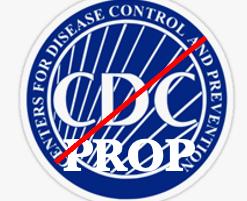
I personally know a few dozen physicians. Most of them are unaware that the narrative that prescription painkillers are responsible for the so-called "opioid crisis" is false. Perhaps a new article in JAMA will start to change the conversation. It's long overdue.
In a large, retrospective cohort study, Alicia Agnoli, MD, MPH, MHS, and colleagues from the University of California Davis compared more than 113,000 patients who had been on long-term high-dose opioid therapy and had their dose tapered (1) with patients before or without tapering. The results are both logical and obvious – death and despair.
Subsequent [to CDC 2016] US have advised caution in opioid de-prescribing. Studies suggest risks of suicidal ideation, transition to illicit opioids, and overdose after opioid tapering and discontinuation.
Agnoli et. al., Association of Dose Tapering With Overdose or Mental Health Crisis Among Patients Prescribed Long-term Opioids. JAMA. 2021;326(5):411–419. doi:10.1001/jama.2021.11013.
While a retrospective study cannot determine cause and effect it can still show trends. Based on the large size of the study group and the consistency and magnitude of change in both mental health crises and overdoses these trends are mighty convincing.
Summary of Inclusion/Exclusion Criteria
- An opioid prescription between January 2008 and December 2019
- A mean daily dose of 50 Milligram Morphine Equivalents (MME) for at least 12 months
- At least 14 months of (continuous) medical, pharmacy, and mental coverage
- Patients with cancer or those receiving hospice or palliative care were excluded
The Data
In the absence of tapering, the incidence of overdose was 5.5 events per 100 person-years. With tapering, overdoses were 9.3 "events" per 100 person-years – a 68% higher occurrence. The magnitude of the effect of tapering on patients' mental health was higher: 7.6 cases of mental health crises per 100 person-years during tapering vs. 3.3 cases in the absence of tapering – an increase of 128%. Mental health crises during tapering were categorized as depression (a 346% increase), anxiety (+79%), and suicide attempts (+430%). (2).
The speed of tapering also impacted overdoses and mental crises, although the absolute magnitude is less. A monthly dose reduction of 10% was associated with an increase in overdoses and mental health issues by 9% and 18%, respectively.
Lessons Not Yet Learned
Data provided by the CDC and the National Survey on Drug Use and Health consistently show no association between the number of prescriptions dispensed and the rate of non-medical use of prescription opioids or of opioid use disorder. In other words, opioid deaths are primarily driven by non-medical usage.
ACSH advisor Jeffrey Singer, M.D., Cato Blog, May 24, 2021
Many of my colleagues have been writing for years that the attempt to get a handle on opioid overdose deaths by restricting legitimate medications is a fool's mission. Yet, the fools are still in charge, at least for now.
And while we're on the topic of fools, it is the bumbling CDC and the malevolent Physicians for Responsible Opioid Prescribing (PROP) who are the primary culprits in establishing policies that have ultimately forced pain patients to suffer and die. It's well past time that they get out of the way and let real science and medicine be practiced by competent physicians.
NOTES:
(1) The study does not tell us how many patients tapered voluntarily and how many were forced to do so.
(2) Overdoses and mental health events were determined by emergency department visits or hospital admissions.



